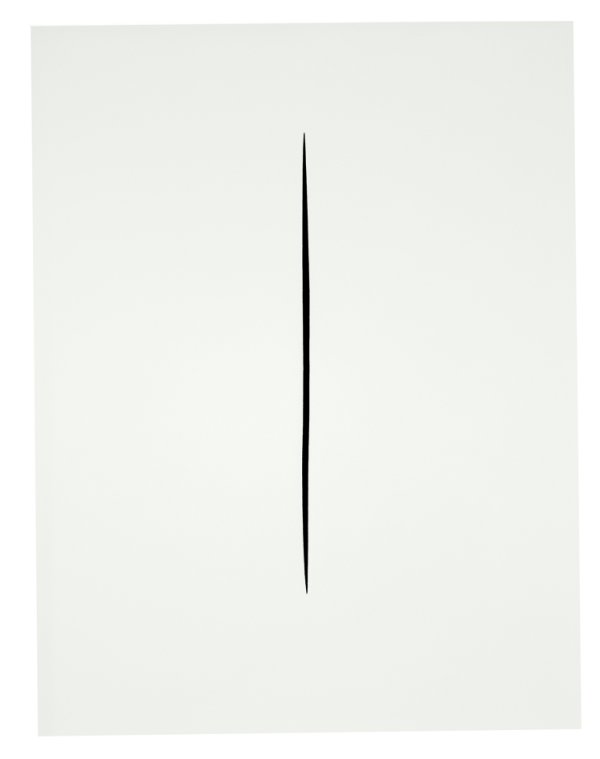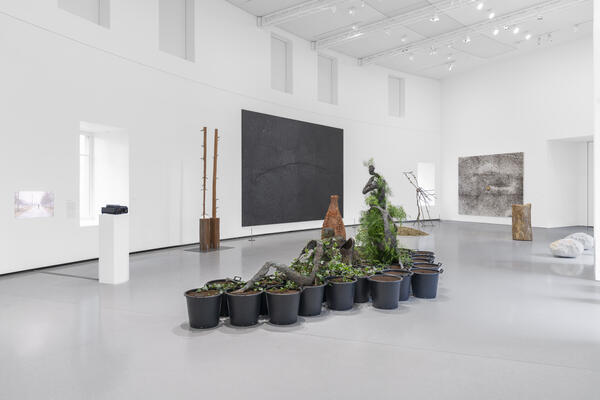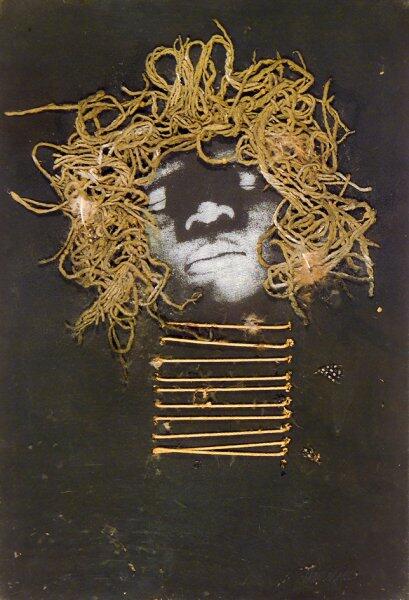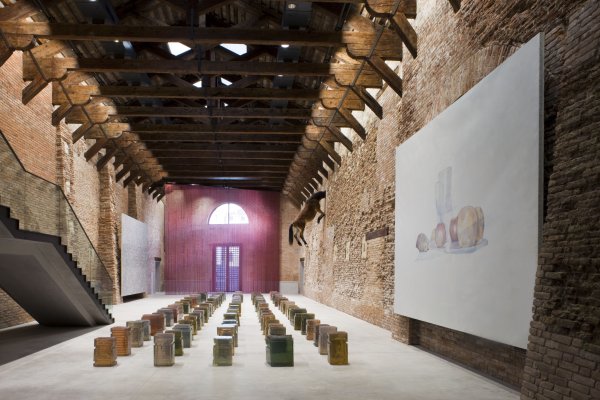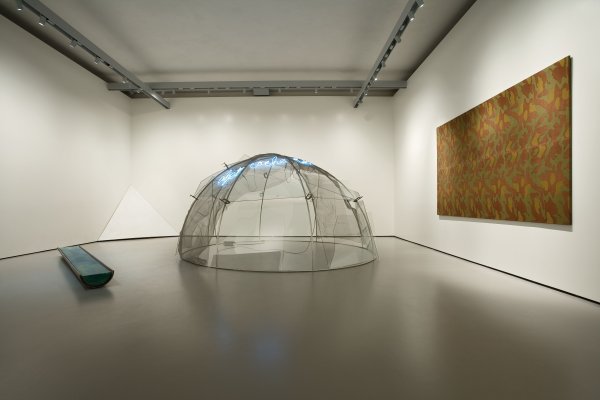Lucio
Fontana
Lucio
Fontana
Fontana
Argentine & Italian, 1899 — 1968
"We want an art free of all aesthetic artifice. We put into practice what is natural, what is true." This sentence from Manifesto bianco (1946) could sum up Lucio Fontana's radical artistic project, whose aura is still very present in contemporary art.
After having approached classical and symbolic sculpture, the artist’s interest in abstraction was affirmed during his stay in Paris in 1935, by his membership of the Abstraction-Creation group. In Buenos Aires during the Second World War, he gathered around him a group of young artists with whom he published the Manifesto Bianco, in 1946, which inaugurated a new step in his artistic career. In 1947, in Milan, he created the spatialist group. From 1949, he worked at the Concetti Spaziali, a genereic name for sculptures and paintings by which he tried to push back the physical limits of the work of art and its materiality in order to reveal its absoluteness. His research leads Fontana to insert the void, the gap, into the compact matter that constitutes his works. Thus, he uses the canvas as a screen whose perforations open towards a transcendental, cosmogonic experience.
The works of this major figure of Italian art from the Pinault Collection were shown for the first time in 2006 at the "Where Are We Going? exhibition at Palazzo Grassi in Venice.
After having approached classical and symbolic sculpture, the artist’s interest in abstraction was affirmed during his stay in Paris in 1935, by his membership of the Abstraction-Creation group. In Buenos Aires during the Second World War, he gathered around him a group of young artists with whom he published the Manifesto Bianco, in 1946, which inaugurated a new step in his artistic career. In 1947, in Milan, he created the spatialist group. From 1949, he worked at the Concetti Spaziali, a genereic name for sculptures and paintings by which he tried to push back the physical limits of the work of art and its materiality in order to reveal its absoluteness. His research leads Fontana to insert the void, the gap, into the compact matter that constitutes his works. Thus, he uses the canvas as a screen whose perforations open towards a transcendental, cosmogonic experience.
The works of this major figure of Italian art from the Pinault Collection were shown for the first time in 2006 at the "Where Are We Going? exhibition at Palazzo Grassi in Venice.
